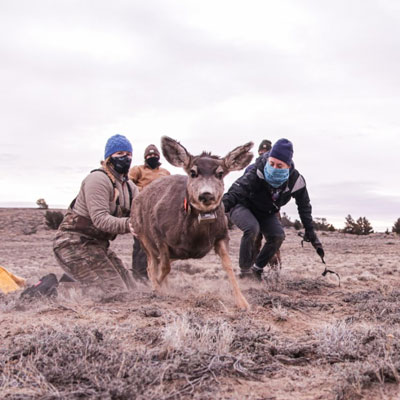Luke Wilde - Promoting Behavioral Diversity Through Informed Management in a Partially Migratory Ungulate
Luke Wilde
Don and Judy Legerski UW Teton Graduate Scholars in Biodiversity Fellowship
Program in Ecology, Department of Zoology and Physiology
Graduate Advisor: Matthew Kauffman
Objectives:
We will compare movement behaviors among and within a diversity of migratory strategies in a mule deer herd and develop management recommendations to benefit climate- and disturbance-resilience. Specifically, we will test predictions of ecological theory, promote public engagement with citizen science and accessible presentations, engage early science education, and create novel tools for managers to monitor migration in real time.
Background:
Animal migration is a global phenomenon of high subsistence, economic and cultural value1. Migratory ungulates bolster rural and indigenous economies and provide multiple ecosystem services. To support this important role, regional managers use migration-specific protocols to maintain migratory herds. For instance, Wyoming managers install wildlife-friendly fencing, conduct habitat enhancement efforts, and adapt harvest regulations according to seasonal occurrence. However, while managers strive to adjust hunting quotas to spread harvest evenly throughout the herd, determining the precise level of harvestable surplus that limits unintended population effects is difficult. As a result, there are often mismatches between hunting quotas and their desired effect on harvested populations.
Share This Page

Research Highlights




